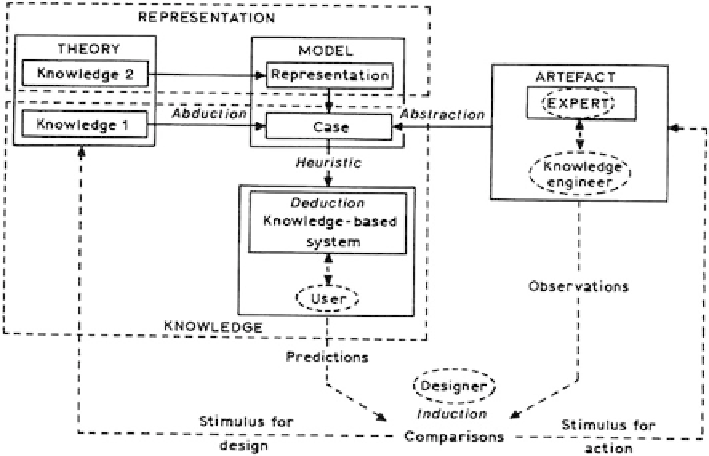Information Technology Reference
In-Depth Information
Fig. 10.1
The role of a knowledge-based system with respect to a theory
program will identify (with respect to the tasks to be performed by the expert) the
information-carrying statements or actions and reject redundant statements or actions
(Chap. 4).
The result of knowledge acquisition would be a model of the expert in the form of a
representation that was at least indirectly convertible to a computer implementation.
The target representation will depend upon the knowledge-based system used. Many
systems are variants of a 'production rule' system that presumes the existence of a
deductive inference unit that can work under the guidance of some simple heuristics
to infer an expert's actions from the model. The model of the expert is given in the
form of 'if
...
then
...
' rules. This is a rule of the form “Rule 34: If the patient has a
high temperature and (Rule 56 or Rule 57 are true) then the patient has flu”. Many of
these expert system models may be fine-tuned with the aid of weightings (sometimes
called certainty factors or probabilities) that are assigned to each of the rules (see
Chap. 6).
These models can never be complete since the systems that use them rarely have
the capability to interact directly with the environment and even those that do will be
deprived of many of the refinements of the human senses. The models have to rely
on a human agent (the user) who must be able to interpret the meaning of the words
generated by the model. These words instruct the user in an exploration of and the
actions to be performed in the task domain (See Chap. 9). Thus, a less ambitious
view of a knowledge-based system is as an aid or intellectual assistant to a skilled
user (Addis
1985
). The exact position of a knowledge-based system in the scheme
of activities is shown in Fig.
10.1
.

